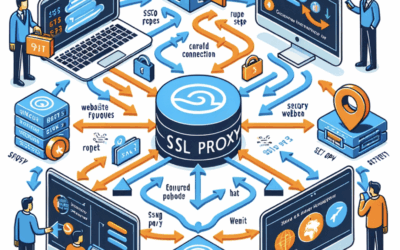→ It’s no secret that IP bans are a major issue for online users. Whether you’re a business owner trying to protect your site from malicious traffic or an individual looking to bypass geo-restricted content, outsmarting IP bans can be a daunting task.
→ But with the right strategies and cutting-edge sticky proxy approaches, it doesn’t have to be! In this article, we’ll explore how you can use these tactics to get around most types of IP blocks.
→ From understanding what sticky proxies are and why they work so well against blocking measures, to exploring real-world examples and troubleshooting tips – by the time you finish reading this guide, you should have all the information needed to start overcoming those pesky restrictions in no time!

What Is An Ip Ban?
⇒ Discover our:
→ An IP ban is a type of internet restriction that blocks access to websites and other online services from certain IP addresses. It restricts users by blocking their location, preventing them from accessing the content they want.
→ IP bans are commonly used by website owners to protect against malicious activity or spam coming from specific locations. However, this can be a problem for those who need access to these sites or services for legitimate purposes.
→ To get around an IP ban, many people turn to proxy servers, which allow them to route their traffic through another computer with a different IP address. This makes it appear as though the user’s connection is originating from somewhere else, thus bypassing the restrictions imposed by an IP ban.
What Is A Sticky Proxy?
⇒ An IP ban is a restriction that prevents users from accessing specific websites or services using their current Internet Protocol (IP) address. This type of ban can be used to block malicious activities, such as spamming and hacking attempts if they come from the same source. It’s also commonly implemented by content providers to protect their intellectual property rights.
⇒ Sticky proxy approaches are a cutting-edge way of bypassing IP bans. Unlike traditional proxies, sticky proxies create unique identities for each user session and use different IP addresses each time the user connects to the internet. This makes it harder for online service providers to detect and block access based on an individual’s IP address.
⇒ Additionally, these approaches often combine multiple anonymizing technologies like virtual private networks (VPNs), masking methods, and other anonymity tools to increase security and privacy when surfing the web. As a result, sticky proxies provide more comprehensive protection than standard proxies do.
How To Set Up A Sticky Proxy
⇒ Getting your IP banned can be a major drag, but there is still hope! By using cutting-edge sticky proxy approaches, you can outsmart pesky bans and keep on browsing the web.
Before we get into how to set up a sticky proxy, let’s take a look at what exactly it is.
A sticky proxy is simply a type of virtual private network that allows users to temporarily hide their actual IP address by masking it with another one. It works like an intermediary between two computers connected through the internet — the user looks as if they are accessing the website from somewhere else instead of where they are located.
This can come in handy when trying to bypass restrictions put in place by certain websites or services. Setting up a sticky proxy requires some technical knowledge; however, once it’s been configured correctly, you’ll have unlimited access to content from all over the world without having to worry about getting blocked again!
Benefits Of Using A Sticky Proxy
Sticky proxies can be a great way to avoid IP bans, but they also offer some other useful benefits.
With the right approach, sticky proxies enable users to access multiple websites and services while still hiding their true identity.
Plus, sticky proxies provide an added layer of security over traditional anonymous methods by keeping the user’s original IP address hidden even when making requests for new sites or data. This means that users are better protected against malicious activity like DDoS attacks and phishing scams.
Additionally, with a sticky proxy service, it’s possible to use different locations at once without having to switch between networks or devices – thus allowing for greater flexibility and convenience in surfing the web anonymously.
Best Practices For Sticky Proxy Security
-The use of a sticky proxy can be an effective approach for evading IP bans, but it is important to take the necessary steps to ensure your security.
-The first step is understanding how a sticky proxy works and why it’s useful. When using a sticky proxy, one will have access to a single static IP address that masks their true location. This makes it difficult for those attempting to ban them by targeting their geographical area or IP address.
-Now that we understand the basics behind sticky proxies, let’s look at some best practices when utilizing this technology. One should always make sure they are using secure protocols like SSH or HTTPS when connecting through their proxy server.
-Additionally, you should try to establish multiple connections with different servers in different locations so as not to become too predictable from an IP-banning perspective. Finally, keeping track of your bandwidth usage is also important; if you’re consuming too much data then someone may start paying attention!
Conclusion
→ In conclusion, IP bans are a common way to restrict access to certain websites. Even with an IP ban in place, however, you can still access the site through the use of a sticky proxy. Setting up a sticky proxy is relatively easy and provides several benefits like enhanced security and improved privacy.
→ To make sure your data remains safe while using a sticky proxy, it’s important to follow best practices such as regularly changing passwords and avoiding public networks when connecting. By taking these precautions, you can outsmart IP bans and continue accessing your favorite sites without worry or hassle.




















